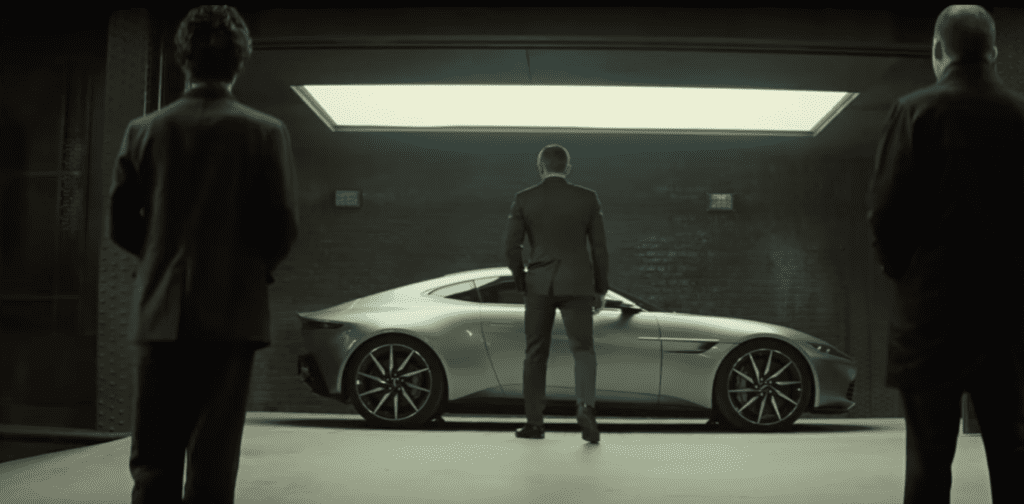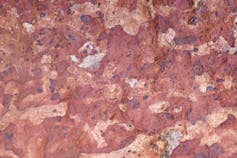Where do all of James Bond’s gadgets come from? A geologist tells the raw truth

Laser watches, fingerprint guns, explosives and, of course, over-equipped cars: the list of gadgets flaunted by James Bond is as bewildering as the mind of their inventor, Q. While some of these gadgets actually exist (laser, fingerprint recognition, back reactor), others, as we shall see, are more fanciful.
But they all have one thing in common: the raw materials needed to make them, and in particular the mineral resources that geologists are helping to extract from the earth’s crust. Below are some that jumped out of the screen for me.
The fast, inconspicuous cars of the world’s most famous secret agent
In 1964’s Goldfinger, James Bond (Sean Connery) has to give up his Bentley for an Aston Martin DB5 modified by Q (the unforgettable Desmond Llewelyn). This is the first of eight appearances of a car that will go on to become inseparable from 007.
The Aston Martin DB5, which first appeared in Goldfinger in 1964. This car is made from aluminium extracted from bauxite ore.
N. Charles, Fourni par l’auteur
The auto is a good example of how products have become more complex and incorporated a greater diversity of raw materials over time.

Bauxite : the main ore of aluminium, the metal used in 007’s DB5, which takes its name from Baux-de-Provence, France.
N. Charles, Fourni par l’auteur
The DB5 contains an array of minerals, starting with aluminium, a metal known to make cars lighter. The latter is derived from bauxite, an ore mined in Jamaica near Ocho Rios, which, incidentally, served as the setting for Crab Key Island, Dr No’s hideout, in 1962.
The body of the DB5 is made of aluminium and magnesium alloy plates resting on a tubular steel structure. The engine block is aluminium, as are the pistons and cylinder head. The connecting rods and crankshaft are made of steel doped with chromium and molybdenum for greater strength. The aluminium rims are mounted on chromed steel hubs, as are the spokes.
Of course, we mustn’t forget the silica in the windows, the copper in the electrical wiring, the lead in the battery or the carbonates and kaolin in the paint, and the petrol to make the whole thing run at top speed.
The automotive industry has come a long way since 1964, and one innovation follows another, each bringing its new share of unique materials. Several dozen are needed today for a standard vehicle – and what can we say about the latest racing cars driven by 007 since 2000, such as the BMW Z3 or the Aston Martin Valhalla?
This goes on with electric vehicles, whose batteries rely on lithium, cobalt, graphite, nickel and rare earths. In 1971 Diamonds Are Forever, James Bond can be seen flying and driving around in no less than an electric lunar module. More recently, in Dying Can Wait (2021), the Aston Martin Valhalla is a plug-in hybrid, but James Bond has not yet gone all-electric.
Golden guns that would melt in real life
Another cult item is the Walther PPK, the German pistol used by 007 in many of the Bond films. It’s a weapon made from a stainless steel alloy. Although the steel is mainly iron, it also contains other elements depending on its use and the properties required: chromium, molybdenum, nickel, manganese, carbon, silicon, copper, sulphur, nitrogen, phosphorus, boron, titanium, niobium, tungsten, vanadium, and cerium.
Much more precious, Francisco Scaramanga’s (Christopher Lee) pistol is made of solid gold and assembles everyday objects to go unnoticed during checks: lighter, cufflinks, fountain pen as well as a cigar case. Limited to one shot, the pistol fires bullets of 4.2 mm calibre, weighs 30 g and is made of 23-carat gold with traces of nickel. So much for fiction.

Francisco Scaramanga’s gold pistol, solid gold here being unrealistic for dedicated use… The bullet, also in gold, is engraved
Gareth Milner, Flickr, CC BY
In reality, it’s hard to imagine a gun made entirely of gold, a very dense and, above all, very soft metal, which wouldn’t withstand the repeated power of a gunshot for very long. In jewellery, gold is often combined with silver, copper or zinc to make it wearable. On 4 December 2023, one kilogram of gold was trading at around €66,000, an all-time record (World Gold Council). It’s hardly surprising, given that gold has been a precious, unalterable, shiny metal with a deep yellow colour since Antiquity, arousing covetousness and serving as a safe haven.
In Love from Russia (1963), James Bond receives 50 gold British sovereigns in a briefcase brimming with gadgets. Attracted to the gold coins, the enemy Grant opens the booby-trapped case while holding 007 at gunpoint. Tear gas escapes, saving Bond’s life.
James Bond and his high-tech enemies
The saga has also always been about surprising the general public with cutting-edge technology, which may be little known at the time of the film’s release.
What better example than the laser, which, should we be reminded, stands short for Light Amplification by Stimulated Emission of Radiation. The saga likes to beam it as often as possible, alternatively adding it to pistols, watches, cars, and satellites.

Laser guns (plastic !) from the space base in Moonraker, 1979.
Nicolas Charles, Fourni par l’auteur
In Goldfinger (1964), film director Guy Hamilton chooses to bypass Ian Fleming’s novel of the same name by threatening James Bond not with a chainsaw, but a laser.
The latter were also used in other Bond films: satellites in Diamonds Are Forever (1971) and Murder Another Day (2002); laser pistols in Moonraker (1979); laser watches in Never Again (1983) and Goldeneye (1995); laser-equipped cars in Killing Is No Game (1987), etc.
Lasers can be used to a variety of ends. For one, telemetry: from the Greek “tel” (“remote”) and “metros” (“to measure”), this practice consists in remotely measuring physical and electrical data. Other uses include cutting objects and projecting light.
Physicist Théodore Maiman introduced the first operational laser in the real world in May 1960 (American Physical Society), right before James Bond.
This first laser used a ruby, a mineral in the corundum (aluminium oxide) family, like sapphire. But this is a synthetic ruby created from aluminium oxide (from bauxite) mixed with a tiny amount of chromium (mainly produced from chromite). There are different types of laser, depending on the application:
Crystalline lasers: made of silica glass (from very pure quartz) or synthetic ruby or sapphire crystals (aluminium oxide doped with titanium, chromium or rare earths : neodymium, ytterbium, praseodymium, erbium or thulium) ;
Fibre lasers : composed of optical fibres based on silica (derived from ultra-pure quartz) and doped with rare earths (metals extracted mainly from minerals such as bastnaesite, monazite or xenotime) ;
Gas lasers: using helium (extracted from natural gas deposits) and neon (extracted from atmospheric air gases) or CO2 ;
Organic dye lasers.
The red light beam in Goldfinger was emitted from a laser (probably ruby) whose brightness was amplified by special effects.
However, the destructive nature of the laser is pure fiction. During filming, an operator used an acetylene torch under the pre-cut table even though Sean Connery was lying on it !

Shark’s teeth (
Shaun Versey, Flickr, CC BY-SA
Finally, since we all know the bad guys like to bare their teeth, let’s mention the surgical steel jaw of the impressive Shark (Richard Kiel) in The Spy Who Loved Me (1977) and Moonraker (1979). It’s a stainless and corrosion-resistant steel that limits the risk of allergic reactions when it comes into contact with the skin. Its composition includes iron, nickel, chromium, manganese and molybdenum.
James Bond is like many other citizens, he consumes mineral raw materials on a daily basis. At a time of energy, ecological and digital transition, mineral resources are essential elements in the decarbonisation of our activities.


